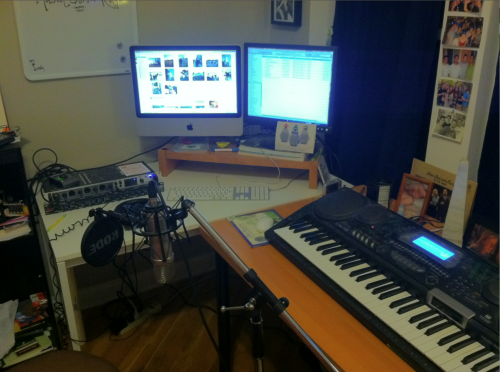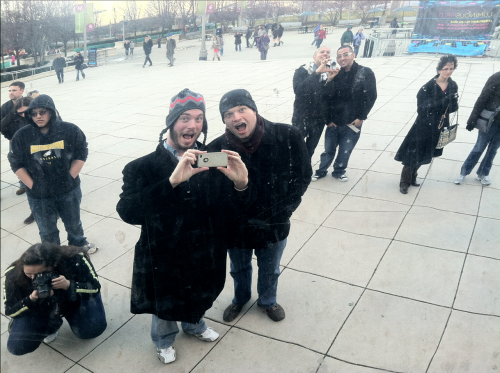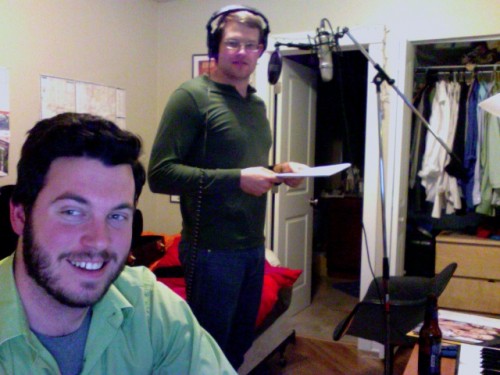Flip Flips in the Windy City: Transferable Skills
What do you do if your friend wrote a song and wants to record it? What if you think it would be really cool to add percussion, some strings, and back-up vocals? With skills learned while grabbing a quick MFA at Columbia College Chicago (now transferable skills), it’s easy! And you can do said friend an awesome favor, instead of getting him an engagement present. Or is it, in itself, a sweet engagement present? You decide. Anyway, transferable skills…
My buddy Chris came to visit last weekend. He’s a very good friend (we’re groomsmen in each other’s weddings this summer, so you know he’s a good one).
During his last night here, I said “Hey, do you want me to record you singing that song you wrote for Molly?” Taken aback a little, he said “Yeah, I guess”. And 2 minutes later, he was much more excited. So we tried a couple takes of him laying down the guitar against a click track (internal metronome). This proved a little challenging, and it’s not Chris’ fault. Chris is a talented guitarist & singer considering he is an even more talented dentist and former Division III football player (center, team captain, almost 4 undefeated regular seasons).
But recording sessions are tough for two reasons:
1. Playing against a robotically precise metronome is often unnatural for those that aren’t used to it. It takes a lot of practice.
2. The very act of being recorded puts a lot of pressure on anyone, and it also takes a lot of getting used to. It’s just like how people act differently if they’re being filmed.
I really wanted to record Chris on a click track for many reasons:
1. Playing to a click tends to produce a better, consistent recording.
2. I could quantize my MIDI accompaniment (probably the biggest reason).
3. I could loop Chris’ guitar (and MIDI accompaniment), instead of having to record each take at full length.
4. We could do punch-ins (recording specific measures in the middle).
But not doing these won’t keep you from getting a good product, it just means a little more work. So I recorded Chris playing just guitar for the duration of the song. Then I recorded his master vocal track. Recording them separately allowed me mixing flexibility later and a better isolated recording of both. With that, we ended up with this, a completely acceptable version of Chris singing and playing guitar.
Now we get to the fun part! At least for me.
Guitar and vocals are good and all, but unless you’re Peter, Paul, & Mary, and have both amazing voices and the ability to write songs that keep fresh without changing (or even adding instrumentation), we needed more. So I added some MIDI accompaniment, including 2 violins, cello, and string bass. These were all pretty easy to do, even without a click track. Adding a drum kit, Gypsy percussion (thanks East West!) and hand claps was a little harder. But the micro-inconsistencies in tempo give the song an overall authentic quality. At least that’s my artistic excuse. My favorite part of the process was adding back-up vocals. Singing harmony is the best, and I’ve sung enough with Chris to know that our voices blend very well a certain way. I am very pleased with the final product!
The MFA program here at school taught me (and/or improved) what I needed to know in order to do this:
-recording technique
-MIDI programming within a DAW
-what gear I need (interface, mic, sample library)
-mixing
But I don’t usually use these skills to record songs. In fact, I’ve only done it once or twice for my favorite song. And now that it’s all said and done, I am so happy to have been able to do this for one of my best friends.




